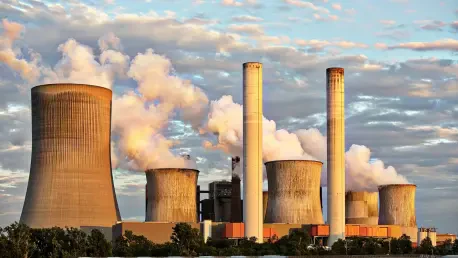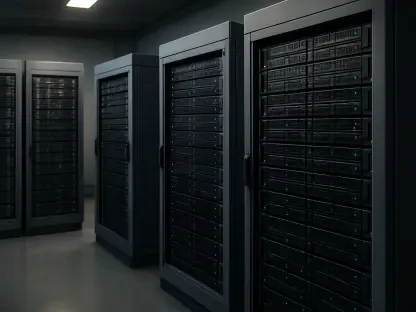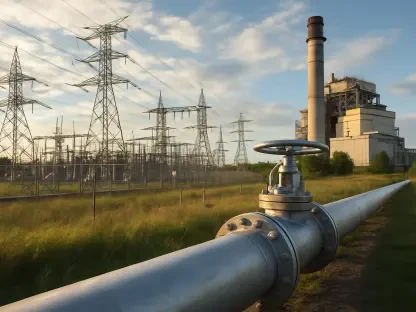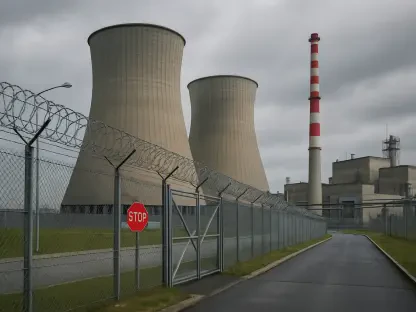Christopher Hailstone is a reputable figure in the energy management and electricity delivery sector, bringing his extensive expertise to our discussion on nuclear energy. With the Palisades nuclear plant setting a precedent in the U.S. by restarting after decommissioning, his insights into the regulatory and operational shifts this entails will be invaluable. We’ll explore how recent regulatory decisions and industry dynamics impact the future of nuclear energy in the United States.
Could you explain the significance of the NRC’s recent licensing and regulatory approvals for the Palisades nuclear plant?
The NRC’s approvals mark a crucial step toward reviving the Palisades nuclear plant. By granting the necessary licenses, the NRC essentially acknowledges that the plant can safely receive new fuel and return to operational status. This sets a precedent since Palisades is the first decommissioned plant being brought back online in the U.S. These approvals show significant trust in the safety assessments and preparedness strategies executed by Holtec International, the company spearheading the restart.
What steps has Holtec International taken to prepare for the restart of the Palisades plant?
Holtec has been diligent in readying the plant for operations. They’ve worked on reinstating necessary documentation and programs that were active before the plant’s shutdown. Additional intensive inspections and updates to infrastructure and technology have been ongoing to meet current safety standards. Transitioning qualified reactor operators to active status is another critical step in ensuring the plant’s readiness.
How did the NRC’s approval allow Palisades to transition its licensed reactor operators to on-shift status?
This approval is vital because it essentially greenlights the operational aspects from a human resources perspective. By permitting the transition of reactor operators to on-shift status, the NRC recognizes that Palisades has the trained personnel required to manage day-to-day plant operations safely. It’s a vote of confidence in the training and competence of the staff that needs to be in place before the plant can be fully operational.
Why is the decision to bring Palisades back online considered an unprecedented milestone in U.S. nuclear energy, according to Holtec President Kelly Trice?
Holtec President Kelly Trice views this as unprecedented because it reverses a trend. Historically, once nuclear plants have been decommissioned, they stay offline. Reviving Palisades not only demonstrates advances in the nuclear industry’s capability to enhance plant safety and efficiency but also highlights a shift in addressing modern energy demands, using existing infrastructure to deliver reliable power.
What are the remaining licensing actions and additional requirements that need to be met before the Palisades plant can fully restart?
Before Palisades can restart, several actions remain, including meeting specific regulatory safety standards and ensuring all components and systems are compliant with their rigorous requirements. The plant must undergo thorough environmental and safety reviews, and there are ongoing consultations with various stakeholders to address any uncovered issues during earlier assessments.
How has the NRC facilitated the transfer of operating authority from Holtec Decommissioning International to Palisades Energy?
The NRC worked collaboratively with Holtec to ensure a smooth transition of operational responsibilities. This involved detailed reviews to verify that Palisades Energy has the necessary infrastructure and operational protocols to safely manage the plant. By approving this transfer, the NRC supports organizational readiness to operate under current safety standards.
What specific documents and programs did Holtec request to reinstate prior to the plant’s shutdown? Why were they important?
Holtec has reinstated several critical programs covering operational protocols, safety management, and emergency response. These are crucial because they encompass the standard operating procedures and safety guidelines necessary for maintaining reactor safety and efficiency. Reviving these documents ensures that the plant operates under a robust framework that prioritizes safety and reliability.
What was the finding of the NRC’s environmental assessment regarding the restart of the Palisades reactor?
The NRC’s environmental assessment concluded that restarting the Palisades reactor poses no significant impact on the human environment. This finding is pivotal, as it addresses one of the chief concerns regarding nuclear plant operations and their potential environmental footprints. It reflects comprehensive studies and evaluations, affirming that Palisades meets modern environmental protection standards.
Could you provide some context on why the former owner, Entergy, decided to shut down the Palisades plant in 2022?
Entergy made the decision to shut down the Palisades plant due to economic reasons and shifting market conditions that made continued operations financially unsustainable. Aging infrastructure, along with rising maintenance costs and competition from cheaper energy sources, played a significant role in their choice to close the plant. This backdrop adds layers of complexity to Holtec’s efforts to restart the facility.
How has the landscape of nuclear plant operations changed in recent years, as indicated by efforts to restart other shuttered plants in the U.S.?
The landscape has notably shifted with increased interest in reviving shuttered plants, driven by a growing recognition of nuclear energy’s role in reducing carbon emissions and meeting demand. Advanced safety technologies, better efficiency, and newer economic models are making it possible to reconsider nuclear plants as a vital part of the energy grid once again.
What role does the rising electricity demand play in decisions to restart shuttered nuclear plants?
Rising electricity demands create pressure on existing energy sources to meet burgeoning consumption needs. Nuclear power offers a stable and large-scale energy supply that is crucial for meeting these demands without increasing carbon footprints. This makes it appealing to restart shuttered plants as part of a diversified energy strategy that includes reliable and clean power generation.
Can you discuss the significance of the power purchase agreement between Constellation Energy and Microsoft concerning the Three Mile Island reactor?
The agreement between Constellation Energy and Microsoft for the Three Mile Island reactor exemplifies the growing trend of corporate investment in reliable and sustainable energy sources. This 20-year agreement not only supports Microsoft’s commitment to sustainability but also highlights how corporations can drive demand for nuclear energy as part of broader green objectives. It’s a significant endorsement of nuclear energy’s viability as a clean power solution.
What other recently-shuttered nuclear plants in the U.S. are currently being considered for restart?
Apart from Palisades, there are moves to restart the Duane Arnold nuclear plant in Iowa. Like Palisades, this plant had been shuttered due to similar economic pressures but is now being reconsidered as part of a broader strategy to leverage existing nuclear infrastructure to meet modern energy demands. These efforts underline a potential revival trend in the nuclear industry.
How do Holtec’s plans for Palisades compare with NextEra Energy’s actions regarding the Duane Arnold nuclear plant in Iowa?
Holtec’s efforts with Palisades are more advanced since it has achieved key NRC approvals and a clearer path to restarting operations. NextEra Energy is still in preliminary stages with Duane Arnold, assessing feasibility and securing necessary permissions. While both plants share the objective of rejoining the energy landscape, Holtec has progressed further in the reinstatement journey.
What is your forecast for the role of nuclear energy in meeting future energy needs?
Nuclear energy is poised to play a crucial role in future energy needs due to its ability to provide stable and large-scale energy outputs with minimal carbon emissions. As technology advances and infrastructure modernizes, we can expect increasing reliance on nuclear energy to diversify and stabilize the energy grid, especially as demand and environmental considerations grow concurrently.









